
AV Goes Wild
Amazing animals in a changing world.
Text:/ Mandy Jones
Images:/ Heath Warwick (Museum Victoria)
Over the last 12 months Melbourne Museum’s natural history displays, housed in its Science and Life gallery, have been undergoing a major redevelopment. At a cost of over $7 million, the finished project will deliver four new long-term exhibitions and will showcase more than 3,000 objects from the Museum’s vast collection, some of which have never before been on public display.
Dinosaur Walk, the first phase of the redevelopment, was launched in April 2009. The exhibition features all the usual suspects you would expect in any dinosaur display, but through its clever design, enables visitors to walk amongst the skeletons on an elevated ramp to get a real sense of the scale of these incredible creatures.
Phase two of the redevelopment was completed in November 2009 with the launch of Wild: Amazing animals in a changing world, an exhibition about biodiversity, Victoria’s environments, and human impact on nature.
Joe Coleman, Technical Co-ordinator for the Science and Life gallery redevelopment project, is responsible for the delivery of lighting, audio and visual elements of the four exhibitions. Having been with Museum Victoria’s Digital Media Systems team since 2001, he has worked on many exhibitions, but nothing like the scale of the 1600sqm redevelopment, of which Wild is a considerable milestone.

ANIMALS, ANIMALS, ANIMALS
Wild’s design brief was for an object-rich exhibition that would showcase the Museum’s enviable collection of mammals, reptiles and birds from all around the world, with particular emphasis on the fauna of Victoria. To accommodate more than 700 natural history objects (stuffed animals) into the 400m² space, the design team needed to make full use of the space’s soaring curved walls.
The most spectacular part of Wild is the tiered display of animal specimens that dominates the gallery. The majority of the animals in the exhibition are featured in this menagerie of world wide diversity.
The display is separated into five geographic regions, each of which has its star specimens: an Okapi, African Wild dog, Asiatic Lion and Secretary Bird from Africa; toucans, a Jaguar, armadillos, sloths and monkeys from South America; a Great Horned Owl, Giant Panda, Arctic Fox and polar bear from Eurasia and North America; an Indian Rhinoceros, Asian Palm Civet, Sri Lankan Giant Squirrel and Luzon Bleeding-heart Pigeon from Southern Asia; and a Southern Brown Kiwi, Thylacine (Tasmanian Tiger), Red Kangaroo and Dingo from Australia and the South Pacific. Some of these specimens will be well known to visitors having been on regular public display at Melbourne Museum, while others haven’t been shown in over 100 years.
For all its hundreds of animal specimens, the display is clean and minimalist against the white terraced plinth, largely due to the absence of signage and labels. The necessity for visitors to access information about each animal such as the species name and origin as well as a desire to be able to give visitors close-up and 360° views of the specimens led to a clever adaptation of existing technology.
Joe Coleman had previously seen and been impressed by a device called a Panoramic Navigator which was developed by Professor Jeffrey Shaw, from iCinema at the University of New South Wales. Shaw produced the device for the lobby of ZKM, the Center for Art and Media, Karlsruhe, Germany as a means for visitors to find amenities via a touch screen interactive overlay using a live camera feed of the space.
“We borrowed the idea because we realised that with more than 700 specimens on display we couldn’t have text panels for all of them, particularly the specimens up high on the terraces, so using the Panoramic Navigators was a great way of getting around that limitation,” explained Coleman.
Rotary encoders on the X and Y axes of the navigator register the location of each specimen and send the co-ordinates back to the computer, triggering flags to pop up on screen to identify each of the specimens and access more detailed information. The initial design included cameras to enable a live feed of the display but they were dropped from the final design once it was realised that a gallery full of visitors would soon obstruct the view through to the animals, so instead visitors track through a large pre-plotted panoramic image of the finished display, eliminating the need for a live feed.

Construction and execution of the Panoramic Navigators was undertaken by Melbourne company Megafun, and the finished products have been extremely well received.
“Megafun has done a great job with the Panoramic Navigators, particularly the industrial design and the interface. As a device, I think they are a real highlight of the exhibition and are a mode of delivering information that we would like to use again,” said Coleman.
Around 80% of the animals on display have been photographed in 360° by the Museum’s photographers and those images have been transformed into animations for the Panoramic Navigator screens, enabling visitors to view the animals from every angle. Visitors can even download a compressed version of the animation to mobile phones and other portable devices via Bluetooth, and a Wi-Fi-friendly higher resolution version is being developed for iPhones and other smartphones.
Assisting in the interpretation of the animal display is file footage of various animals in their natural habitat projected onto the curved wall at the rear of the tiered specimens. Requiring a clear image over a throw distance of 17 metres, Coleman specified a Panasonic PT-DZ12000U, a 12,000 ANSI Lumen, 1920 x 1080 HD, three chip DLP projector, for the job.
“It was priced much more competitively than comparable projectors with similar output and resolution, so we decided to give it a shot. In terms of bang for your buck I think it’s a great machine, it has loads of features like in-built geometric transform to compensate for odd shaped surfaces like we have, and it’s really bright,” Joe explained.
The projected footage of animals folds and unfolds like origami and Joe explained that this design motif reflects the terraced nature of the space and was inspired by the small, wedge-like window on the northern side of the space which looks out onto Carlton Gardens and allows passersby to peek into the Museum. The folding effect was achieved by mapping the footage onto a 3D animation of the fold using LightWave and then rendered out at 1080 lines as an MPEG2 video. All video editing and post production including the folding animation sequences was done in-house by Stephen Dixon of MV Studios, the Museum’s production studio.
Supplementing the Panoramic Navigators in the world wide diversity space are five Samsung 40-inch (101.6cm) integrated infrared touch LCD panels with onboard PC (Samsung 400TSn). Joe ordered five 1366 x 768 resolution units and was pleasantly surprised on delivery to find that three of the units had been upgraded to the HD 1920 x 1080 model for the same price. When the two remaining 1366 x 768 panels developed faults in the backlight power supply, Samsung also replaced these panels with the 1920 x 1080 model.
SOUNDSCAPES
Complementing the stunning visual displays in Wild are a series of soundscapes produced by Sonia Leber and David Chesworth of Melbourne company Wax Sound Media. The main soundscape uses file material of animals such as herds of Wildebeest, roaring lions and bird calls to add a sense of life and movement to the terraced animal display.
“Parts of the soundscape are quite abstract and there are human sounds mixed into it to give the impression of human impact on the environment and on biodiversity,” explained Joe.
Comprising eight discrete channels of audio, the world wide diversity soundscape uses two channels of BOSE Panaray low frequency speakers, and six channels of FeONIC F1.3 transducers, all powered off QSC CX168 amplifiers. Much to the delight of the exhibition designers, all of the speakers for this soundscape are built into the under-side of the terraces so there are no visible sources of sound. All of the soundscapes in Wild are played back off a dedicated computer running a MOTU 24 I/O unit which integrates easily with the house PIVoD show control system.

CREEPING CRITTERS
Colour and movement is added to the floor at the entry to the Victorian environments section by way of a roaming gecko and other moving critters. For this, Joe chose a Panasonic PT-D6000 XGA 6000 ANSI Lumen single chip DLP with a Rosco IQ Mirror unit attached to it.
“I liked the idea of using a projector because we know that technology well and the mirror gave us the best range of movement for our purposes and budget. It was a great way of livening up the space and the kids love it,” said Joe.



UNSTINTING DEDICATION
An experience aimed at kids but enjoyed equally by adults is an animated interactive table that shows the migration paths from Melbourne to Siberia of tiny red-necked stints. Visitors get to pair up the male and female birds and then guide them through their migration. Developed by New Zealand company Lumen Digital, this interactive display uses a Projectiondesign F12 4000 ANSI Lumen DLP with 1920 x 1200 resolution, rigged vertically above the table surface. The table is washed with infra-red floodlights and an infra-red firewire camera sends data back to a computer that tracks the objects using blob recognition.
LIGHTING
Lighting Designer for the Science and Life gallery redevelopment is Brenton ‘BJ’ James, a veteran of lighting theatrical and museum environments. BJ had a challenging brief to respond to in lighting the Wild space, balancing the need to make the exhibition bright enough for visitors to see the detail of the displays while also meeting the restrictions of object conservation lux levels in lighting the animal specimens.
Lighting the terraced animal display was further complicated by the fact that the ceiling height is 14metres and there are no overhead lighting positions, so a perch position was installed and a balcony rail added to the mezzanine level. BJ used 23° – 50° Selecon Pacific Zoomspots with 1kW halogen lamps to achieve a flat wash of the animal display, not an easy task given the limited angles available.
The displays that make up the Victorian environments section are lit with Acclaim PCs and Aureols with beamshapers which are effective from the five metre grid height in picking out text labels and graphic elements, while the showcases are internally lit using Osram Dragon Eye LEDs and LED strips.
BJ chose five Anolis ArcPad 48 LEDs to create saturated colour washes to represent the transition from day to night in dry forest environments. Synchronised with a soundscape of forest animals, the effect is atmospheric and evocative. Describing the Anolis LED fixtures as “incredibly punchy, even running at just 70%”, BJ was very pleased with the effect.
Control of all lighting in Wild is straightforward with all fixtures being patched to Dynalite dimmers and overall control via the house ControlSoft system.
With Wild now complete and being enjoyed by hundreds of visitors daily, the project team have turned their attention to the two remaining exhibitions in the Science and Life gallery redevelopment. The first exhibition, which will include some impressive animatronics from the Creature Technology Company, is due to open mid 2010 and will recap the last 600 million years of Victorian evolution for those that missed it. The final exhibition, to be delivered in late 2010, will include a cylindrical immersive projection space, in which visitors are surrounded in 360 degrees of stereoscopic projection, to examine the dynamic nature of the Earth, from tectonic plates and earthquakes, to meteorites and volcanoes. Keep your eye on AV for more about these projects.
Mandy Jones is Events Manager for Museum Victoria, responsible for producing special events across the organisation’s four Museum sites including the recent launch events for Wild.
FURTHER INFORMATION
Museum Victoria: www.museumvictoria.com.au/scienceandlife
Megafun: www.megafun.com.au
Wax Sound Media: www.waxsm.com.au
iCinema: www.icinema.unsw.edu.au
Lumen Digital: www.lumendigital.co.nz
IBS Audio Visual (Samsung): www.ibsav.com.au
DRM Audio Visual (Panasonic): www.drmav.com.au
Soundcorp (Panasonic, MOTU): www.soundcorp.com.au
Clearlight Shows (Philips Selecon, Rosco, Anolis): www.clearlight.com.au
PIVoD Technologies: www.pivod.com
Lightmoves (ControlSoft, Dynalite): www.lightmoves.com
Bose: worldwide.bose.com/axa/en_au/web/home/page.html
JEA technologies (FeONIC): www.jeatech.com.au
Bishop Audio & Lighting (QSC): www.bishopaudio.com.au


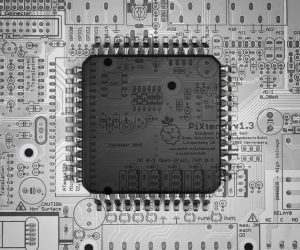
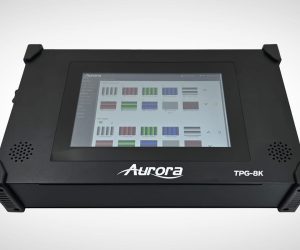

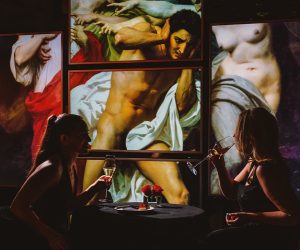
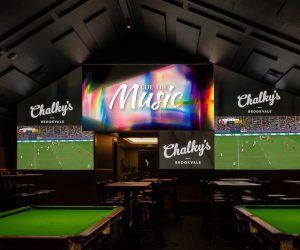


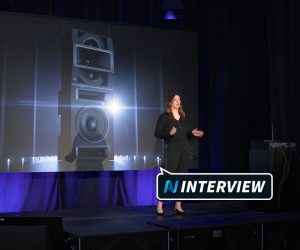


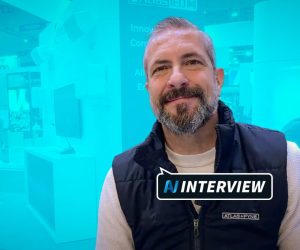


RESPONSES